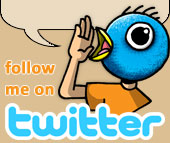
As it’s 50th animated feature film, Tangled is very much the summation of Disney’s previous output. Depending on your opinion of the House of Mouse, that could be either a good or bad thing.
Personally, I think it’s a good thing. Disney has finally figured out a way to align itself with current animation trends and attitudes similar to what Dreamworks and their contemporaries at Pixar are doing without sacrificing the traditional story elements that make a film uniquely Disney. The animations has a snappy feel, a fairy tale princess is front and center and the dialogue is wry without sailing completely over the heads of children.
Most importantly, it’s entertaining. It’s easy for me to say that Tangled is the most fun I’ve had watching a Disney movie since Aladdin. Frankly, its wit and pop makes it one of the few Disney movies I can imagine watching proactively instead of through the filter of nostalgia.

By now you’re probably familiar with the premise behind Tangled. It’s basically a modified take on the German fairy tale of Rapunzel. But, smartly, what directors Nathan Greno and Byron Howard did was expand the mythology and gave us a much more satisfying reason why Rapunzel was locked away in that tower lo’ so many years ago.
While pregnant, Rapunzel’s mother, the Queen becomes very ill. The kingdom sets out in search of a golden flower rumored to have healing properties. The flower has been hidden away by the selfish crone Gothel, who uses the flower to keep her young. But once the magical flower is found, it restores the queen to health – and infuses its healing abilities in the strands of the young princess’s hair. Gothel steals the child away in the night and locks her in a secluded tower, cut off from society, as she continues to use the healing magic to keep her young.

“Why dat hair gotta be so long?” the audience demands. Easy. Cut the hair and it loses its magical power. Well played, Greno and Howard. Well played.
Of course, the problem with writing a movie about an isolated character is that there has to be some drama or change in the status quo for the plot to move forward. Meet Flynn Rider, a thief and a rouge looking for a place to hide after stealing the kingdom’s crown jewels.
Cynically, critics complained that Flynn the Adventurer was introduced as a marketing tool to attract boys (who would be otherwise turned off by a “princess” story) to the film. Considering the disappointing box office on The Princess and The Frog, it’s easy to see why some might jump to that conclusion. Certainly the flim’s marketing and Disney’s decision to name the movie Tangled and not “Rapunzel” would seem to support this theory.

But it actually makes a great deal of sense to have the smarmy and charismatic Flynn as Rapunzel’s guide in the real world. It’s Rapunzel’s dream to investigate the floating lanterns she sees in the distance every year on her birthday. She doesn’t realize that it’s actually a symbolic ceremony from her kingdom longing for the return of the kidnapped princess.
Rapunzel, despite her wonder, is so closed off from the outside world she doesn’t even wear shoes. You need a fast-talking character like Rider to essentially provide both sides of the dialogue. Otherwise you’d be left with a movie where the heroine walks around, clutching a frying pan and looking confused for two acts.
Despite being the Disney movie with the longest running time since Fantasia, Tangled’s 100 minutes never lags or bores. In fact, if anything, it almost feels short. Time flies by as Rapunzel and Flynn explore the soft, rounded, painterly world developed by Disney animators using techniques they were tasked with inventing in order to achieve their look. Typically, whenever Disney sets out to create techniques to develop their films, the results are always memorable.
If I could be critical of Tangled at all, I think they almost made the process too easy. This familiarity with the traditional fluidity of Disney’s style probably made audiences feel as Tangled was something they had seen before. Considering some of the visual cues the film picks up on from Disney’s past (the romantic kiss in the boat from The Little Mermaid or Flynn “surfing” down the trench of a water wheel like Tarzan “surfed” across mossy tree branches) it’s understandable.
As a Disneyphile, I found the references endearing and appropriate for Disney’s 50th animated feature. In fact, these references were very similar to the visual cues producers of the James Bond films did for their 20th franchise film, Die Another Day back in 2002.
In terms of Blu-ray extras, I found them a little light on substance. A short behind-the-scenes feature called “Untangled: The Making of a Fairy Tale” played more like a bunch of bumpers ported from the Disney Channel and were stitched together with narration from the film’s stars, Mandy Moore and Zachary Levi.
There are a handful of “deleted scenes” (or, rather, slightly enhanced animatics), a couple of extended songs and two alternate versions of the film’s opening sequence. They’re interesting, but not substantive.
Most entertaining are the “9 Tangled Teasers” – a collection of parody commercials made for the theatrical release of the films that utilize the film’s characters.
Ultimately, the success of Tangled relies in its unique ability to be respectful of the Disney fairytale tradition while also keeping it pliable enough to have fun with it. The movie keeps things snappy, but never looks down its nose at you for enjoying traditional storytelling. The movie is a fine addition to any animation fan’s library.

Related Posts ¬
| Mar 1, 2004 | ONE FROM THE VAULT |
| Feb 15, 2012 | REVIEW – WAINY DAYS |


